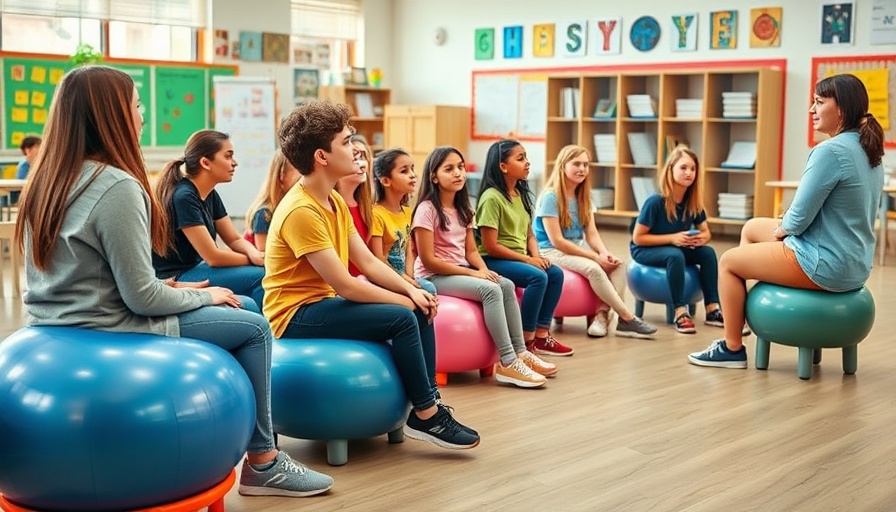
Unlocking the Power of Flexible Seating: A Classroom Revolution
Flexible seating has transformed traditional classrooms into dynamic learning environments where students thrive. But what does flexible seating truly mean, and how can teachers implement it without chaos? This article dives deep into the practical solutions provided by innovative educators, spotlighting one teacher's successful approach to flexible seating.
In the video 'Flexible Seating Without the Chaos,' the discussion dives into innovative classroom management techniques, exploring key insights that sparked deeper analysis on our end.
Understanding Flexible Seating: Beyond the Basics
Flexible seating allows students to choose where and how they learn best, differing from traditional classroom settings where desks are stationary and uniform. This adaptive space can include bean bags, wobble stools, cushions, and low tables, fostering a sense of ownership and autonomy among learners. The approach acknowledges that children have varying learning styles and comfort levels, enhancing engagement significantly.
Inspirational Insights from an Innovative Teacher
In the video, the featured teacher reveals her methods for successfully integrating flexible seating into her classroom. She has crafted a system that allows for movement and choice while maintaining structure. By establishing clear expectations and routines, she ensures that students understand how to make the most of their flexible seating. This teacher's approach exemplifies how adaptability can lead to a more engaged and focused class.
Implementing Flexible Seating Without Losing Control
One critical aspect of successful flexible seating involves creating a balanced environment. The teacher emphasizes the importance of clear communication and boundaries. Here are some strategies that have proven effective:
- Establishing Clear Guidelines: Rules around movement and seating choices help manage potential chaos. Students should know when and how they can transition between areas without disrupting class.
- Incorporating Collaborative Activities: Group work and discussions can naturally encourage movement within the classroom, allowing students to engage more actively without losing focus.
- Regular Reflection: Having students reflect on what seating arrangements work best for them can help tailor their learning experiences, promoting responsibility in their choices.
Why Flexible Seating Matters for Students and Teachers
This new approach not only benefits students but also shapes teaching practices. Teachers report higher levels of student engagement and focus when introducing flexible seating. In an era where education must cater to diverse needs, flexible seating also promotes inclusion and enhances collaboration, helping students develop social skills and teamwork.
Future Predictions: The Evolving Classroom Landscape
As we look to the future, the trend toward flexible seating is expected to expand. Schools are recognizing that learning environments must be responsive to the needs of the learners, particularly in STEM education, where collaboration and creativity are crucial. Educators are likely to continue embracing adaptable seating arrangements that foster better learning experiences.
Common Misconceptions and Myths about Flexible Seating
Despite the rising popularity of flexible seating, some misconceptions persist. Many believe it leads to chaos, but, as demonstrated in the video, when implemented thoughtfully, it can enhance focus and learning. Another myth is that it may not be suitable for all students. In reality, flexible seating can cater to a variety of learning styles, making it a valuable strategy for educators nationwide.
Call to Action: Innovate Your Classroom Today
If you’re ready to transform your classroom environment, consider the insights provided by this innovative teacher. Explore flexible seating solutions that could work in your teaching context. Engage with fellow educators, share ideas, and implement what resonates. By prioritizing a student-centered approach in your classroom, you're investing in a brighter educational future.
 Add Row
Add Row  Add
Add 




 Add Row
Add Row  Add
Add 

Write A Comment